The photoshoot
The cover photography for Sgt Pepper’s Lonely Hearts Club Band was taken by Michael Cooper, at his studio in Chelsea, London, on 30 May 1967. The Beatles also posed for the pictures used on the back cover and inside gatefold.The Beatles arrived during the evening of March 30. We had a drink, they got dressed and we did the session. It took about three hours in all, including the shots for the centre-fold and back cover. I’m not sure how much it all cost. One read exaggerated figures. I think Robert Fraser was paid £1,500 by EMI, and I got about £200. People say to me, ‘You must have made a lot of money on it,’ but I didn’t because Robert signed away the copyright. But it has never mattered too much because it was such a wonderful thing to have done.
The gatefold sleeve
Although they had been persuaded by Robert Fraser not to use The Fool’s illustration for the front cover of Sgt Pepper, The Beatles wanted it to appear on the inside gatefold. It was Fraser’s intuition, obstinacy and creation of a prototype sleeve that eventually helped changed their minds.Right up until the end we knew the cover was going to be Michael Cooper/Peter Blake, but we wanted this inside cover to be The Fool’s drawing. Robert kept saying, ‘I don’t think you should use it.’ I’d say, ‘Well, Robert, it’s our album and we’re gonna use it.’ And the other Beatles were quite adamant too. A week would go by, then Robert would say, ‘I really don’t think you should use it. It’s just not well drawn. It’s not right. It’s bad art.’ We said, ‘Let us be the judge of that. It’s our album cover, not yours. You’re just the art director. We don’t have to listen to you.’ In the end he came round with the cover as it exists now, with the four of us gleaming hopefully out. Give everyone a love vibe. He’d come round, saying, ‘I say, I think, this should be the inside cover. It’s much better. Works with the front, works with the back.’ And he put the package together as it eventually was and persuaded us finally not to use The Fool’s artwork. And he was right. I’ve seen it since and he was really right. With things like that he was pretty right. He had an opinion and stuck to it. He could be a little bit too arrogant – luckily not to me. I would just say, piss off or whatever. I had a little way of deflating him, which was all right. I can see what my kids didn’t like about him. It was just Eton overbearing, I’m just superior to you, which is what you’re taught at Eton.
One person, however, remained unconvinced by the sleeve design. Brian Epstein worried about the permissions that needed to be sought from the public figures whose photographs were to be featured on the front cover.
EMI realised that because many of the people we were depicting were still alive, we might be sued for not seeking their permission. So the Beatles’ manager, Brian Epstein, who was very wary of all the complications in the first place, had his assistant write to everyone. Mae West replied, ‘No, I won’t be on it. What would I be doing in a lonely hearts club?’ So The Beatles wrote her a personal letter and she changed her mind.
Epstein’s nervousness over the album’s spiralling costs became a preoccupation. Prior to taking a flight from America to England he had a premonition that the aeroplane would crash, and left a note with his business partner Nat Weiss stating: “Brown paper bags for Sgt Pepper.”
This album was a big production, and we wanted the album sleeve to be really interesting. Everyone agreed. When we were kids, we’d take a half-hour bus ride to Lewis’s department store to buy an album, and then we’d come back on the bus, take it out of the brown paper bag and read it cover to cover. They were the full-size albums then, not like CDs: you read them and you studied them. We liked the idea of reaching out to the record-buyer, because of our memories of spending our own hard-earned cash and really loving anyone who gave us value for money. So, for the cover, we wouldn’t just have our Beatle jackets on, or we wouldn’t just be suave guys in turtlenecks looking like we did on Rubber Soul). It would now be much more pantomime, much more ‘Mr Bojangles’.
Anthology
The gatefold sleeve also featured, for the first time on a modern pop record, the lyrics printed on the back cover, and the package included cardboard cut-outs based on the Sgt Pepper concept. The total cost for the cover was £2,868 5s/3d, an immense sum for the time.
The album sleeve was the first to feature printed lyrics, and it was one of the first to have a gatefold sleeve. It was also the first to have anything other than a plain inner bag too, the first pressing coming in a slightly psychedelic sleeve designed by Simon and Marijke of The Fool. And we also had a card with the cut-outs, which I had originally intended to be a small packet with badges and pencils and such like. That was stopped because it would have caused EMI big marketing problems.
Also on the back sleeve was a photograph of The Beatles, with McCartney turning his back to the camera. This picture later became a part of the ‘Paul is dead’ myth, along with the OPP badge he wore on the inner sleeve. It stood for Ontario Provincial Police, though some misread it as OPD and took it to mean ‘officially pronounced dead’.
For our outfits, we went to Berman’s, the theatrical costumiers, and ordered up the wildest things, based on old military tunics. That’s where they sent you if you were making a film: ‘Go down to Berman’s and get your soldier suits.’ They had books there that showed you what was available. Did we want Edwardian or Crimean? We just chose oddball things from everywhere and put them together. We all chose our own colours and our own materials: ‘You can’t have that, he’s having it…’We went for bright psychedelic colours, a bit like the fluorescent socks you used to get in the Fifties (they came in very pink, very turquoise or very yellow). At the back of our minds, I think the plan was to have garish uniforms which would actually go against the idea of uniform. At the time everyone was into that ‘I Was Lord Kitchener’s Valet’ thing; kids in bands wearing soldiers’ outfits and putting flowers in the barrels of rifles.
Anthology

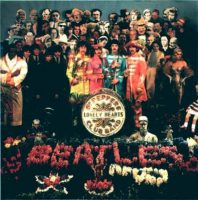
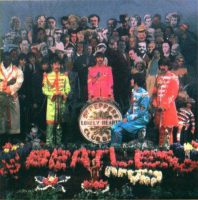

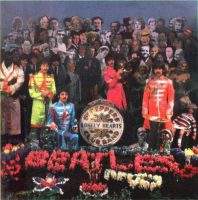
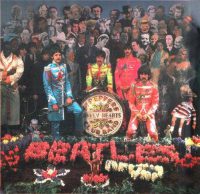
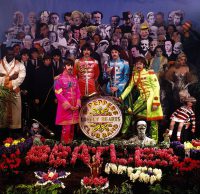
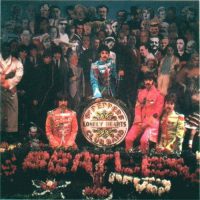
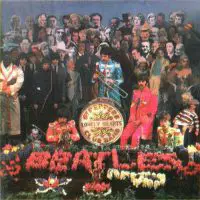
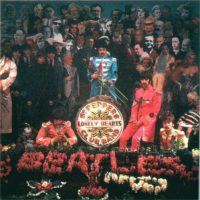
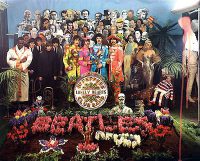
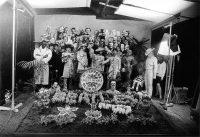
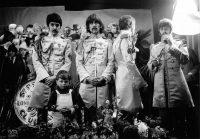
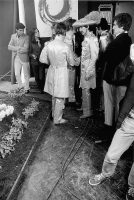
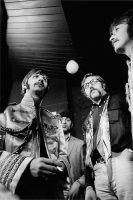

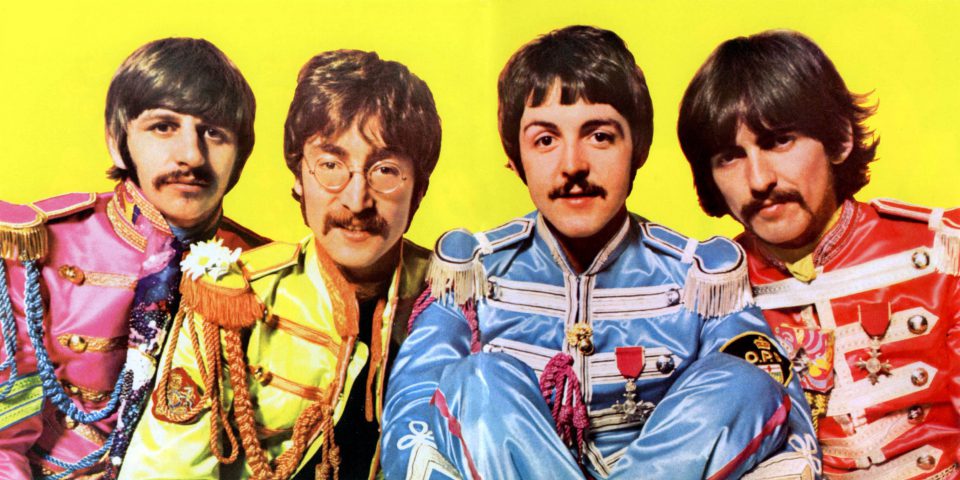
Ah yes Avery Road my fav Beatles album.lol
I read a quote from George once where he stated for him making Sgt Peppers was not a pleasant experience. It was Paul’s baby and he only allowed the others to contribute as he saw fit.
Personally I prefer the White Album and Revolver and Abbey Road being my fav Beatles album.
I’m sure you have Martin on camera or tape saying this correct? All I’ve ever seen Sir George speak about was how he took two “incomplete” songs given to him from Paul and John where he worked out the basic arrangement which eventually became Day In The Life.
Trixie is referring to George Harrison who indeed stated he was not really “into” that album when recording it.
George Martin didn’t weld the two parts of “….Life”. John and Paul did. Then Paul and George M. worked out the arrangements.
Beatles Bible states that “Sgt. Pepper” was issued (in the UK) on 1st June 1967. I am certain it was issued on 26th May 1967. The Beatle Monthly magazine issued on 1st June 1967 indicates that the release had already happened and the album entered the UK album chart at No. 1 on a chart published 1st June 1967, both signifying that the release must be before 1st June. Interestingly, the 2017 50th anniversary remix/reissue was released on 26th May 2017, which ties in exactly with what I think/remember as being the original release date in 1967.
Game changer. I think John outshone Paul on this one. The most creative song (in my opinion) was George’s song, though. That song changed me.
I would like to know if you intend to take into account the information that appears in the 50th anniversary deluxe edition of “Sgt Pepper”. There are lots of new and interesting things. For example, John’s bass in “Fixing a Hole,” George’s mellotron on “Strawberry …” or Paul and Ringo drumming on “Good Morning …”, which explains that full sound. However, there are also contradictions or omissions. For example, in “Strawberry …” they do not say who plays the piano or percussion. In “A Day in the Life” it says that John plays piano, but it does not specify if it only refers to the final chord, because in the line-up it does not specify who they played in that chord. In “Being the benefit …” they omit John’s piano and Lowery, but they talk about a Martin mellotron. What do you think?
Paul overdubbed bass on “Fixing a Hole” and AFAIK, John and George both played guitars on “Good Morning, Good Morning” with Paul playing the guitar solo as well as bass and the double drums with Ringo, just as you mentioned.
A number of sources (Wikipedia being one, so tread lightly) say that the album was going to be called Dr. Pepper’s LHCB, but wasn’t because of the soda in the US. If true, that puts Macca’s name origin story in a different light.
On Sgt Pepper, (on the CD) shouldn’t the “hidden track” be somehow hidden instead of tagged on the end of A Day In The Life? Like with a signal that the CD is over and just ends, unless you hit the skip button to go to the final track before it stops (if you want to hear it). I mean it would be a little more “in the day” that way.
Beatles fandom myth begins…”Sgt. Peppers is the first concept album”. Myth dispelled by actual Beatle John, who says, ” besides the opening song leading into the next song, you could take any song off this album and put it onto any of our albums”. Of course, as we all know, a concept album is when all songs were written with a predetermined theme each relating to another. When I’m 64 was written by Paul when he was 16. Benefit for Mr.Kite was written by John by essentially rewriting what he had read off an antique poster.
Who keeps adding musician names to the list and why?!?
Joe, the site creator/moderator does as he becomes aware of more information.
Pretty simple, isn’t it?!?
In Part 4 above, George Harrison is quoted as saying, “I’d just got back from India, and my heart was still out there. After what had happened in 1966, everything else seemed like hard work. It was a job, like doing something I didn’t really want to do, and I was losing interest in being ‘fab’ at that point.”
What was it that had happened in 1966??
Brian Epstein died, then they went on their transformational trip to India. I think that was the order of things, though I could be wrong. They were all grieving Epstein’s death, and people handle grief in different ways. Paul poured himself into work, and I guess George didn’t feel like it. He did come up with probably the most meaningful song on the album, though, Within You, Without You, obviously inspired by his time in India, and, to an extent, his grief.
As for the Personnel section: Paul: vocals, … and drums (Good Morning Good Morning). First time for Paul on drums on the Beatles album. By the way, does anyone know if Paul played one of Ringo’s drum kits here?
From “Mad Magazine” when I was probably 11. I was nine when SPLHCB was released.
“Ringo, George, Paul and John, played a trick and put us on. Dropped a hint that Paul was dead as nails and rocketed their record sales”
I first heard Sergeant Pepper in about 1974 I think, I borrowed it from a friend at school when I would have been about 16. I was a Beatles fan by default almost, to people of my generation they were just there, and you expected them to come out with brilliant things. I was extremely disappointed by this album which I thought sounded muddy compared to other Beatles efforts. I had heard Penny Lane and Strawberry Fields by then, but the only songs from the album as such that I recognised were When I’m 64 and With a Little Help From My Friends, possibly only from covers, so the material was farily new to my ears. I still think that notwithstanding its brilliance it is questionable whether as a sum of its parts it equals other Beatles albums, before or after. There are only a couple of songs in my view on the album or released as singles that are good songs and are also as well arranged and produced as they could be, including Fixing a Hole and Within You Without You. There are other brilliant songs such as With a Little Help From My Friends, When I’m 64, Lucy in the Sky, Good Morning that are really to my ears let down by the arrangements. I would also include Penny Lane (is that clunky piano really that interesting?) and A Day in the Life (this is a pop group/rock band whatever, who let that orchestra in here, they’re ruining the song?!). And then there are items of what could just be whimsy such as Lovely Rita which is almost perfectly arranged and produced, and Getting Better, which in the absence of its arrangement performance and production would barely be a song at all, but which I think is one of the most brilliantly executed recordings they ever produced. So coming to it some years after it was issued it struck me as patchy, and still does.
I don’t blame EMI for rejecting John’s brash suggestion of putting Hitler on the cover, because it would have been very offensive to Germans and survivors of the Nazi regime. According to Horst Fascher, John would often greet the audiences at the clubs in Hamburg with a Heil Hitler and give the Nazi salute, pull out a black comb and pretend it was a moustache, so that he could look like Hitler.
I’m surprised that John didn’t get arrested by the German authorities or put in a Hamburg prison, because giving the Nazi salute or chanting “Sieg Heil” is a criminal offence in Germany, according to Strafgesetzbuch section 86a.
As for the Personnel section: Paul: vocals, … and drums (Good Morning Good Morning). First time for Paul on drums on the Beatles album. By the way, does anyone know if Paul played one of Ringo’s drum kits here?
I have seen a photo where Ringo is playing his drum kit at a studio session and a clean-shaven Paul is standing up with some drumsticks, presumably to play on the floor tom.
The second drum part in question on “GM, GM” could well have been Ringo and Paul collaborating on double drumming and to clarify things, Paul’s part would, logically, have been intended to augment, not replace, Ringo’s drumming – an earlier instance occurred on the recording of “Yes it is” when Paul overdubbed a cymbal, again to augment Ringo’s drums.
Sorry, but for anyone who puts SPLHCB down in any way (notwithstanding comparing that which preceeded or followed) basically you need to go get some new ears. Any of the more recent masterings show that the main driver (Sir Paul) steered the Beatle ship at this period. The guy was basically on fire from 66 onwards when the touring ceased
I always wanted to know WHY Paul turned his back to the camera for the back cover photo? And why would they use that photo for the album? It is so odd a choice. It practically invites the “Paul is dead” crowd to notice and interpret.
I suppose we’ll never know.
I remember hearing that it was Mal Evans standing in for Paul on that back cover shot – forget why, but McCartney wasn’t at the shoot (separate one from the cover)
I never heard the Mal stand in story. Makes sense if it’s true. Thanks for sharing.
Cheers!
Mal Evans standing in for Paul? In his biography on this website Joe describes Mal as “tall and burley.” Paul was hardly tall and burly. Couldn’t be Mal unless someone manipulated the photo to make Mal look more like Paul in stature.
That’s true. Mal Evans was 6 feet 3 inches tall.
Paul is 5 feet 10 inches. Unless it’s a cardboard cutout of Paul’s back as a subtle allusion to the front cover? Someone should ask Paul!
https://www.theguardian.com/music/2023/aug/14/photo-that-solves-sgt-pepper-mccartney-mystery-up-for-auction
“It had long been rumoured that Paul McCartney was not at the Sgt Pepper’s sleeve photo shoot because the back of the album only showed him from behind. This image showed the side of his face which would prove that he was indeed there on the day.”
So this photo shone on The Guardian website from Aug 14 2023 proves McCartney was present at the Pepper photo-shoot for the back cover. But the question remains… Why turn your back, Paul?